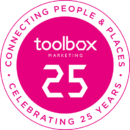At Toolbox Marketing, we’re always looking ahead to stay on top of the latest design trends. This time, we’re handing the spotlight to Emily, our talented work experience student from West Suffolk College, who is currently studying graphic communication and design.
Emily has been busy researching the key design trends shaping 2025, exploring how they can enhance business success and engage audiences in fresh and exciting ways. From conceptual and abstract design to creative AI and typography, her insights will help keep your designs ahead of the curve.
One key process in design is finding and understanding design trends and why they enhance business success. As designers, we ask ourselves every day whether our work will attract our target audience. So, we’ve created a list of 2025 design trends to reflect on and ensure our work stays fresh.
These trends help our designs remain fun, exciting, and eye-catching.
1. Conceptual & Abstract Design
This trend tends to use vibrant and bold colours with layers and textures to keep things eye-catching and engaging. It is known for free-flowing artwork that feels spontaneous, incorporating organic shapes and playful asymmetry. It guides the viewer through animations for a fun and dynamic experience.
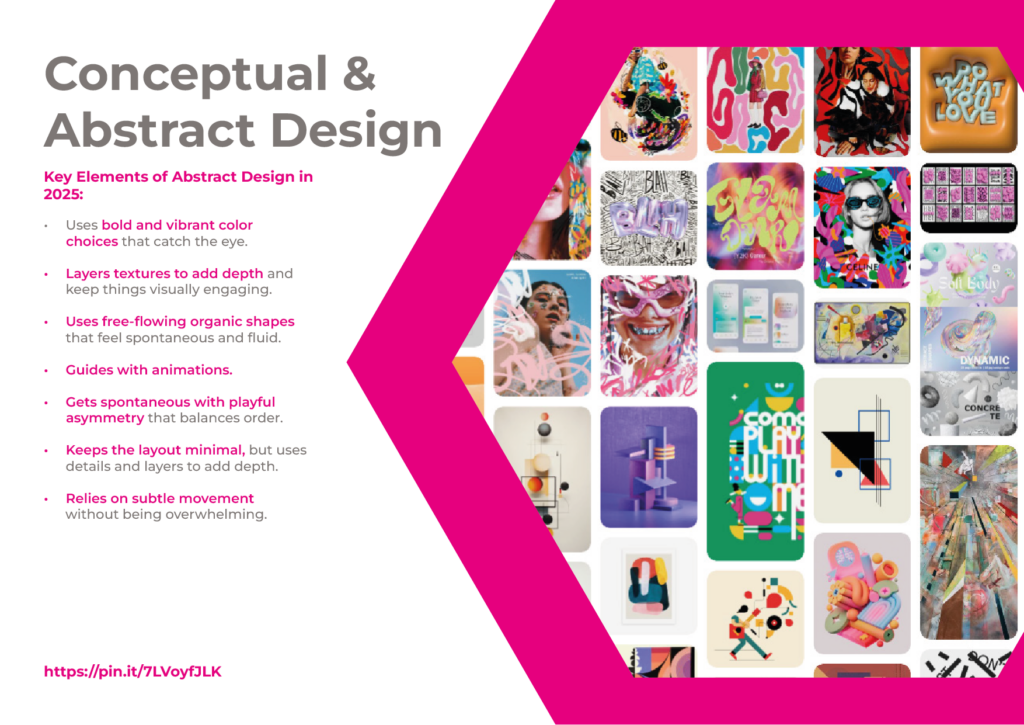
2. Storytelling Animation
Using smooth transitions between web design sections helps keep viewers engaged and focused. This includes buttons, icons, and controls that enhance usability and style, bringing pages to life as users scroll through a website. To create impact, motion is used to narrate a story, focusing on realistic and fluid movements. The animation should be clean and purposeful—engaging without being distracting. Interactive animations that respond to user actions create a more immersive experience.
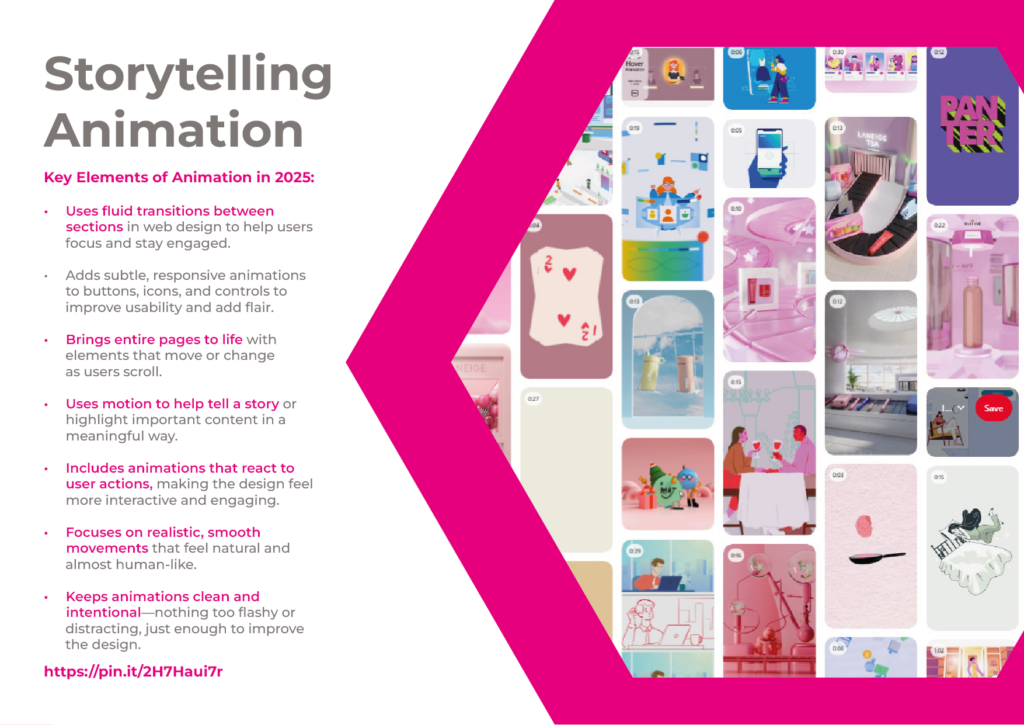
3. Emotion-Powered Characters
Animation with expressive characters helps set the tone and mood while communicating a brand’s story. Making a character feel dynamic, lifelike, and human is important for forming an emotional connection with the viewer. This effect is often achieved using both 2D and 3D animation. To make a character memorable and distinctive, bold and vibrant colours are frequently used. Additionally, characters with playful expressions and movements help guide users through tasks, encouraging an interactive experience.
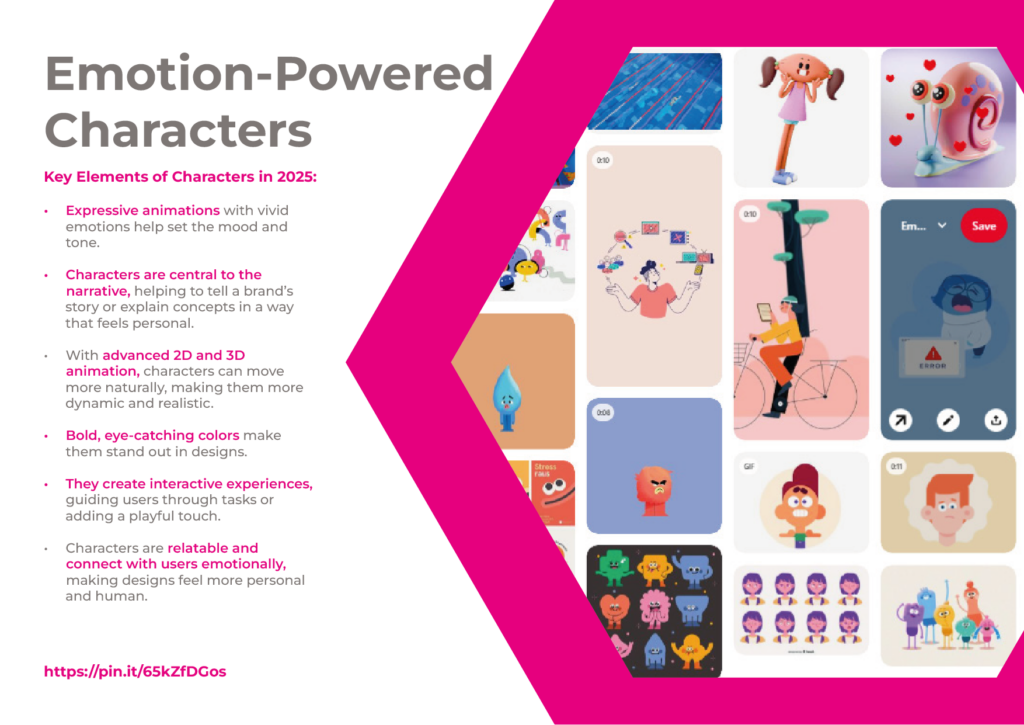
4. New Naturalism
This trend incorporates earthy materials such as mossy greens, deep browns, terracotta, and wood to create authenticity and warmth. Natural elements are added to clean and uncluttered designs, while handcrafted visual elements and physical textures suggest organic qualities. The combination of minimalism and natural aesthetics results in a grounded and elegant look.
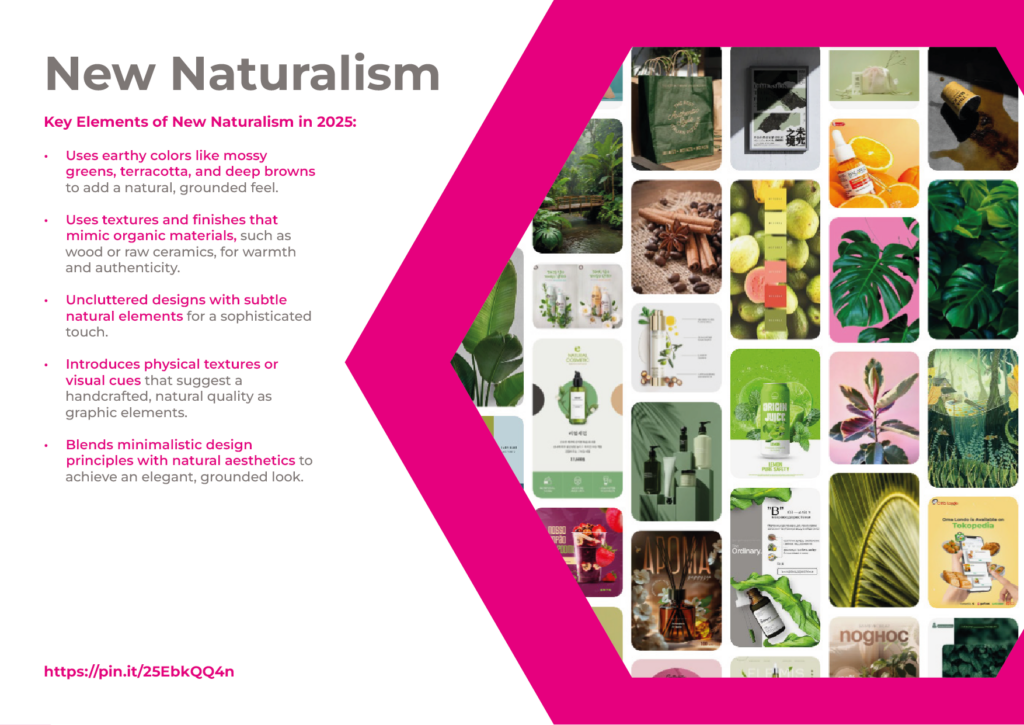
5. Retro Vibes Are Back!
This trend abandons bright neon colours in favour of muted tones. It also incorporates bold borders and frames, along with chunky sans-serif fonts, retro-inspired typography, and hand-drawn elements while maintaining readability. Pixel art and low-resolution visuals are making a comeback, blending flat retro designs with soft gradients and polished textures while using modern animation techniques.
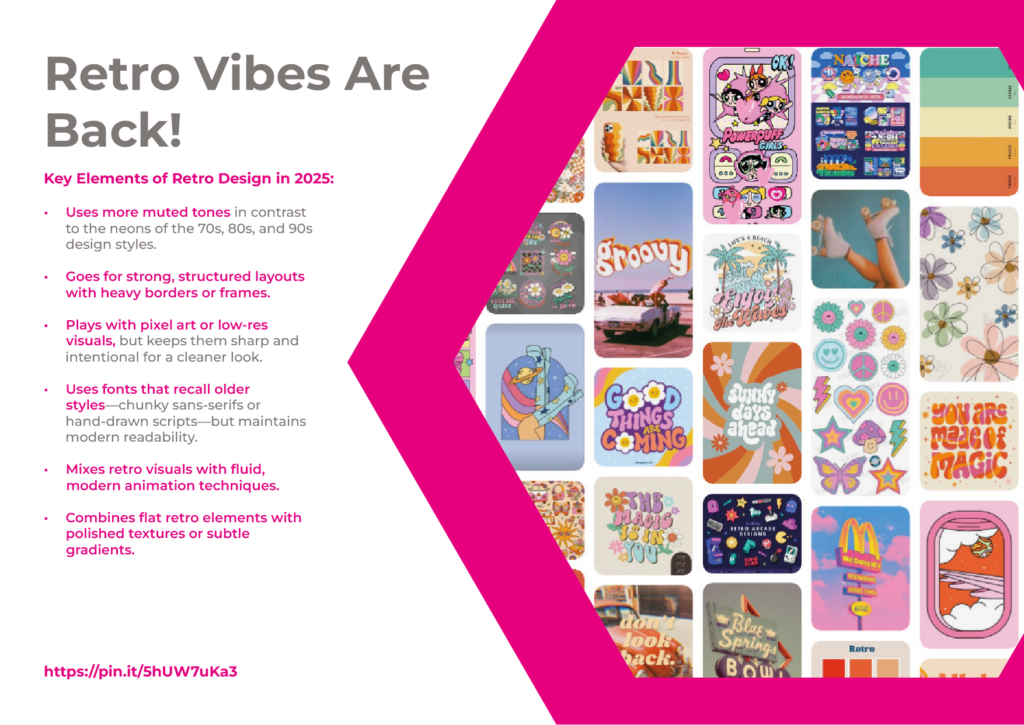
6. Personalised Design
Cultural and linguistic personalisation fosters a deep connection with users by making designs feel intuitively tailored to them. Customisable colours, layouts, and real user data-driven content allow for personalised designs based on user actions and preferences. Websites and apps that adapt to match user behaviour enhance engagement and user satisfaction.
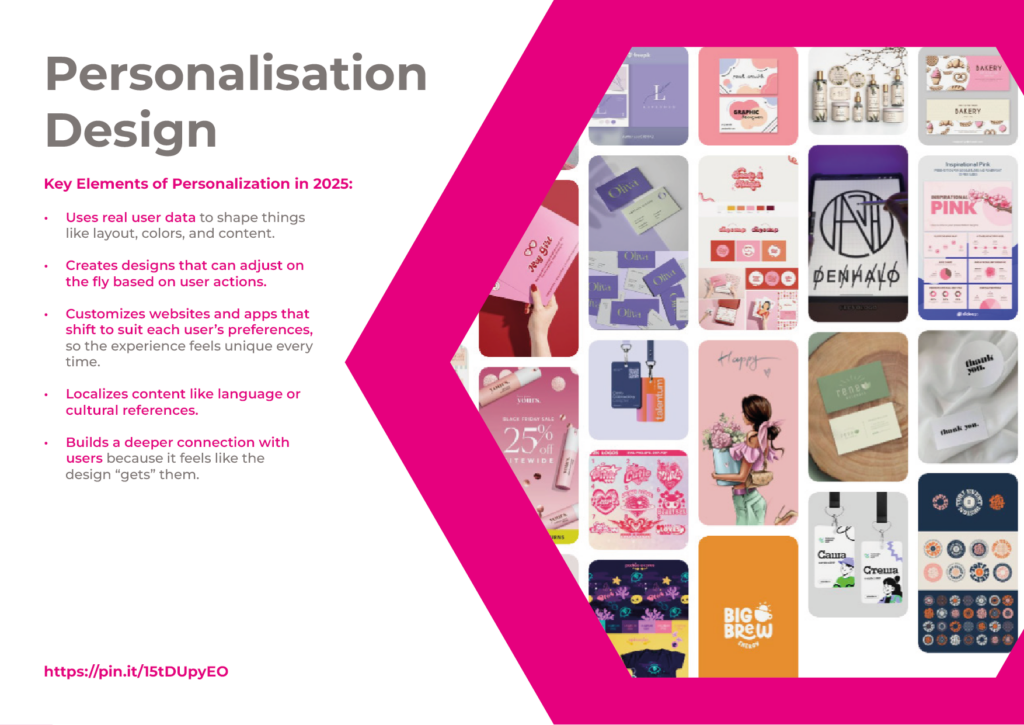
7. Minimal Aesthetics
Spacious designs create a clean and organised feel, allowing elements to breathe. Interactive elements and animations add life to the design without cluttering the interface. For example, smooth scrolling animations can enhance the user experience. Ensuring the user’s attention remains focused on what matters most is key. This is achieved by highlighting one or two main elements against an unobtrusive background, resulting in an elegant and visually sophisticated design.
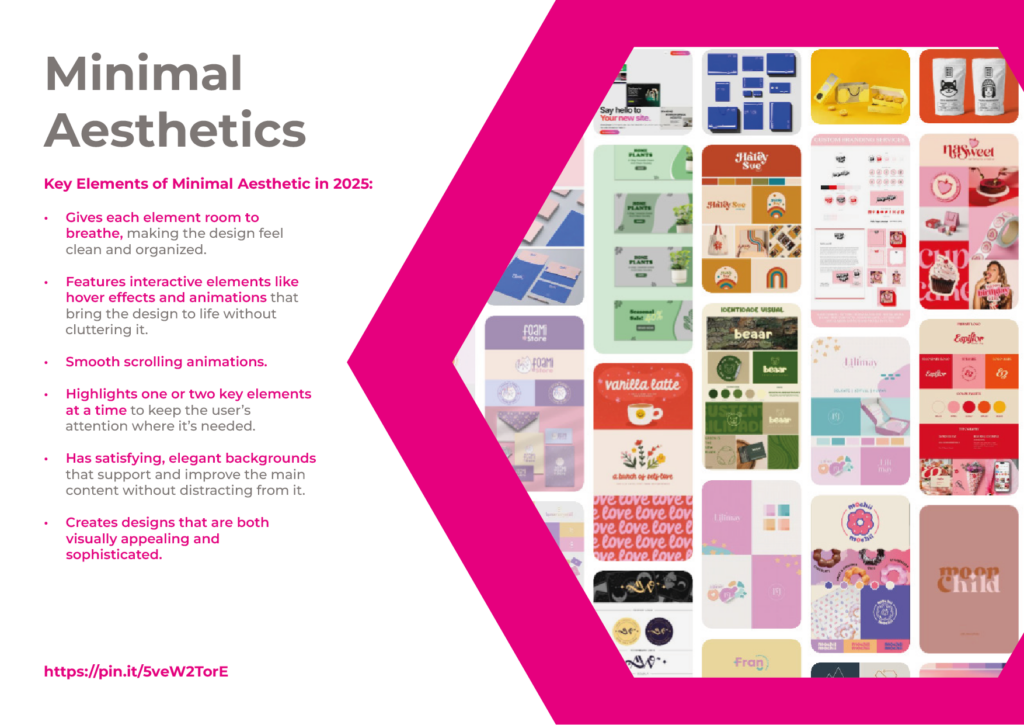
8. Next-Level Data Visualisation
Applications with embedded data visualisation provide users with relevant and instant insights. Customisable dashboards, widgets, and charts allow for thematic and engaging designs that help communicate complex information more effectively. AI-driven data interpretation enables natural language queries while offering visual data responses in real-time. Additionally, subtle animations and transitions bring data to life, while pop-ups and alerts keep users informed with up-to-the-minute updates.
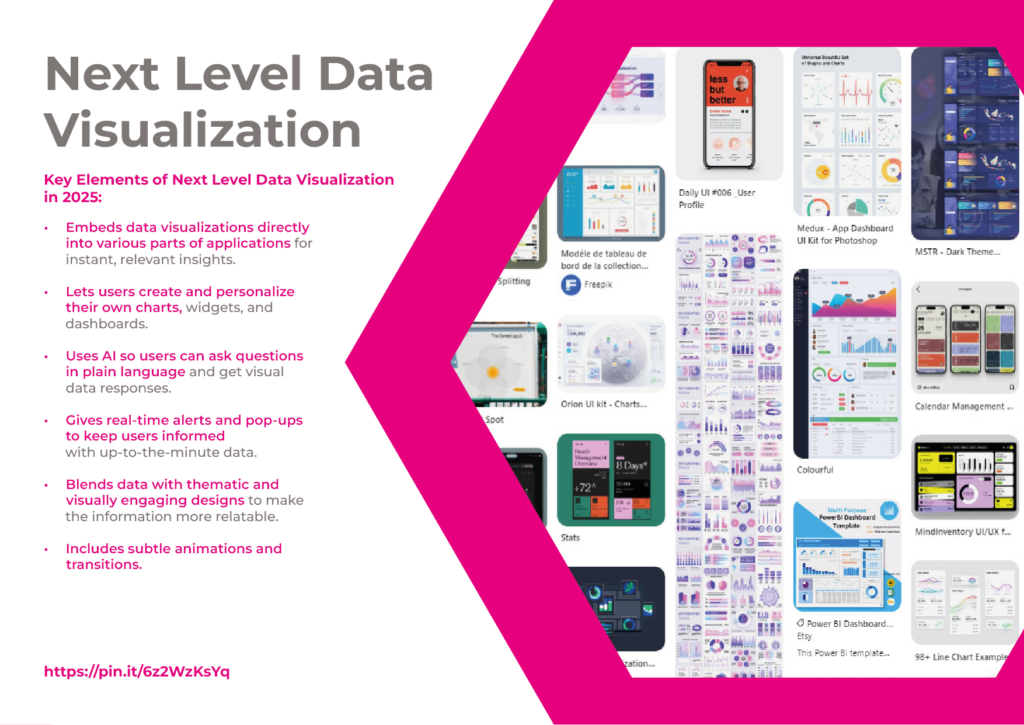
9. Creative AI Design
AI assists with repetitive tasks such as formatting, resizing, and designing multiple variations quickly. It also supports the creation of dynamic and smooth animations, making content adaptation easier and leaving designers with more time for creativity. Creative AI provides real-time feedback to improve design choices, learning from user interactions to enhance personalised experiences.

10. Creative Letter Typography
Typography plays a crucial role in web design, UI/UX, production design, and packaging. Unique typography adds an artistic and natural touch while ensuring readability. Inspired by traditional art forms and real-world objects, typography can make a distinct visual impact. To match the overall design aesthetic, animations can be used to bring typography to life, adding an engaging and dynamic element.
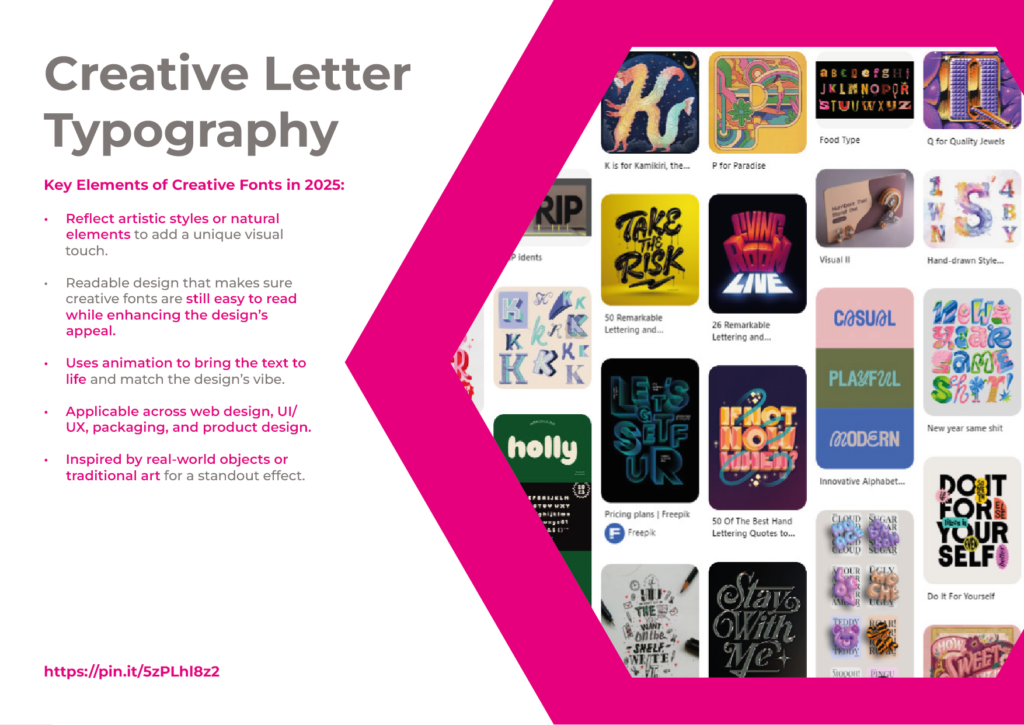
These top trends for 2025 highlight the exciting directions in which design is evolving. By embracing these innovations, businesses and designers can create compelling visuals that captivate audiences and drive engagement. Stay ahead of the curve by incorporating these trends into your design strategy!
